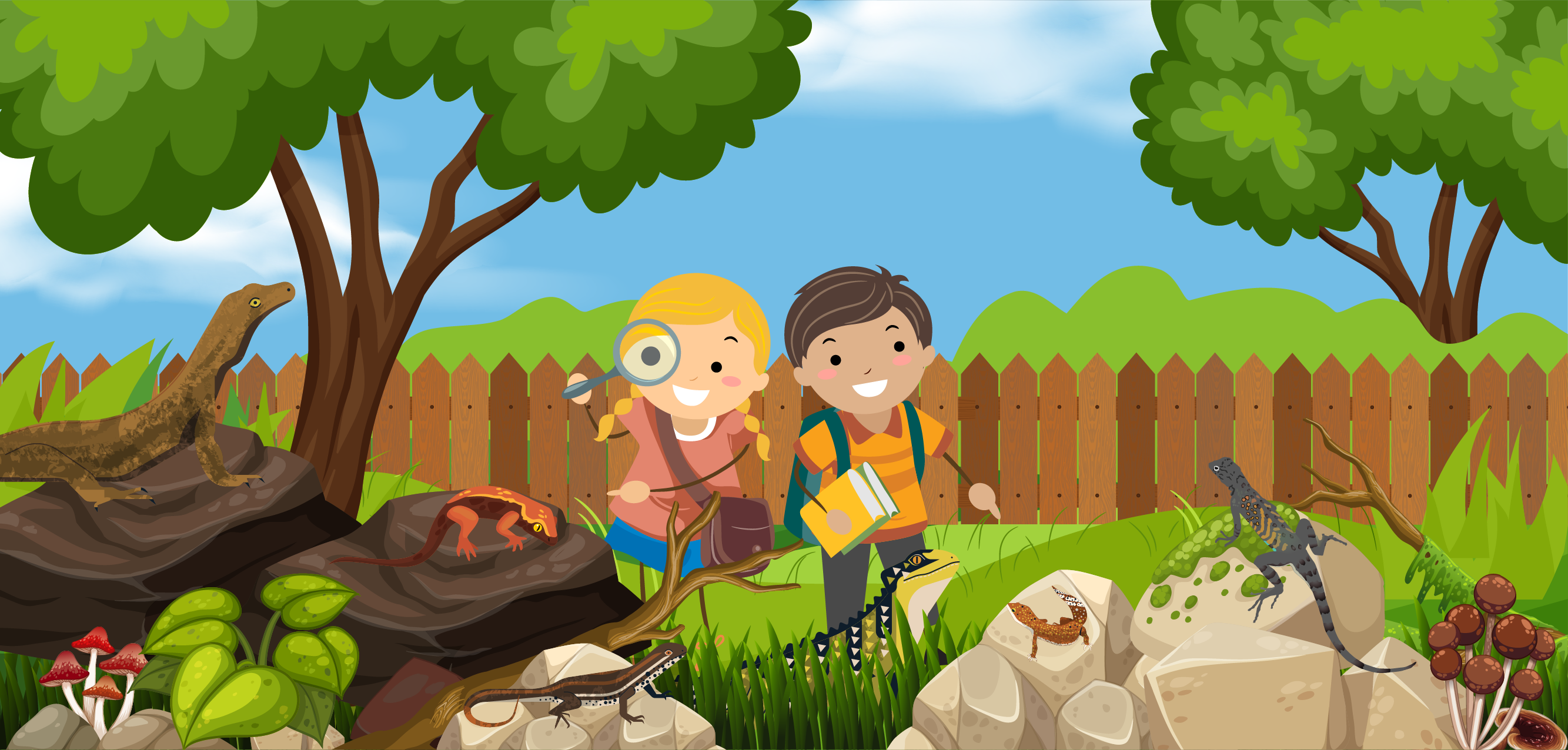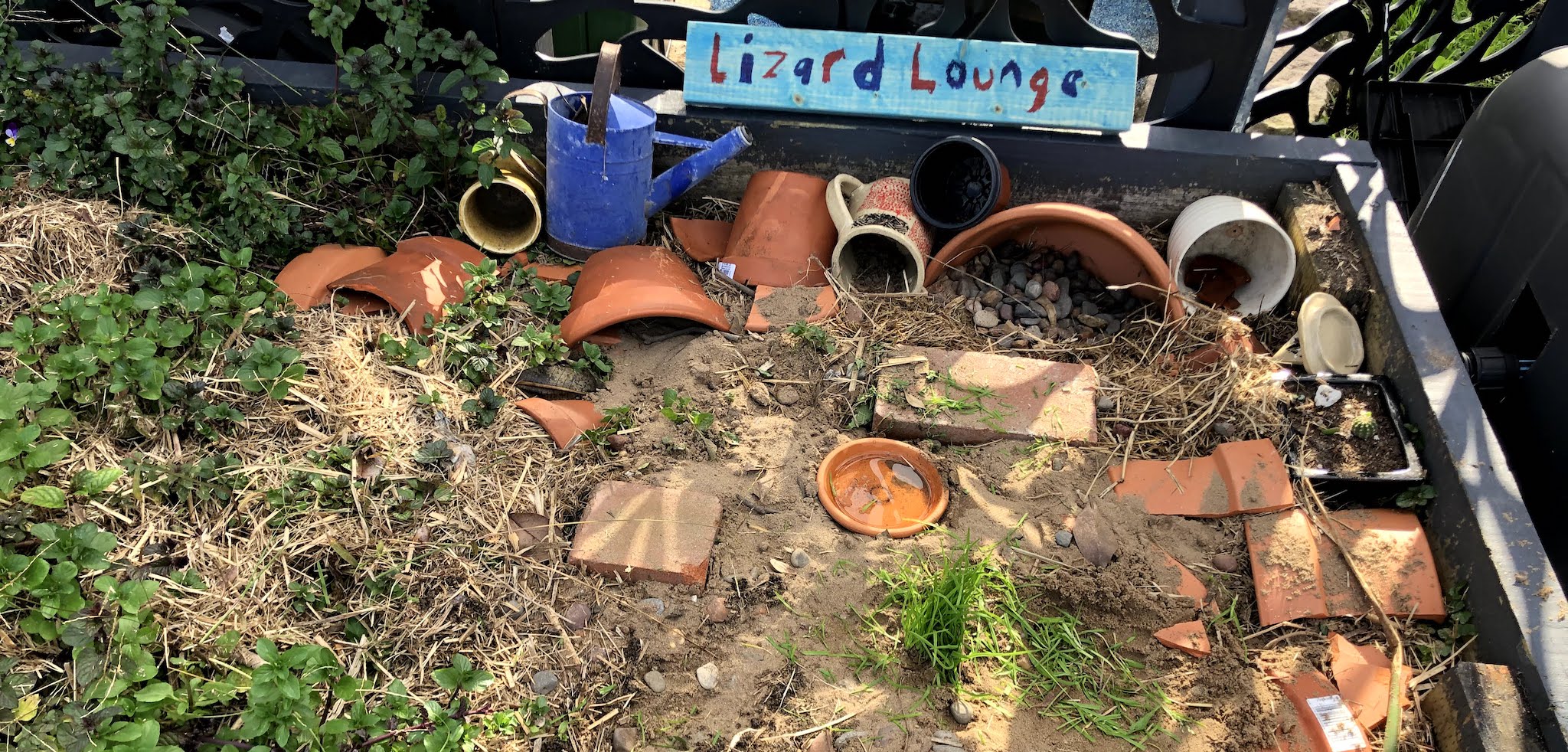
All of our native animals have their place and functions.
Native animals bring balance to both our natural environments, such as bushland and waterways, and our changed environments, such as our backyards and farms. Reptiles are one of the species whose importance is often overlooked but are an essential part of the ecosystem.
YES, even lizards, turtles and snakes are important to the backyard!
Australia has hot climate and is a perfect place for reptiles to thrive. We have over 850 different species of reptile with 90% of these species found nowhere else in the world.
Unfortunately, at least a quarter of our reptile species populations have dropped so much that they are considered threatened. It is important that we do what we can to help reptiles flourish so that we maintain a healthy environment with good biodiversity.
Leaping Lizards
Lizards are one of the most visible reptiles that we find in our backyards or on our properties.
There are five main families of lizards: skinks, geckos, dragons, legless lizards and goannas.
Skinks and geckos are the most common lizards we find at our places, with dragons also being quite common along the east coast. Lizards love to eat insects and their larvae. They can help keep insect populations under control because they have a voracious appetite for them.
If you have a range of lizards on your property, they will live and feed in different areas. Some lizards love to climb and eat pests high up in the foliage and others stick to the ground. Some move slowly collecting things like snails and slugs, while others are lightning fast and can catch cockroaches, crickets and flying ants. Lizards are so good at catching and controlling insects that they can lessen the need for pesticides.
Having a good population of lizards at your place has an additional benefit as they in-turn become food (prey) for other native animals like kookaburras and magpies.
Lizards Under Threat
One of the biggest threats to lizards in both the natural environment and on our properties are introduced animals. Feral foxes and feral cats are quick, stealthy and have sharp claws and teeth which, when combined with great hearing, sight and smell make them expert hunters who often find lizards, and their eggs, easy prey. They are thought to be the main reason that many species have become threatened. Eradicating pests on our properties and in the bush is important if we wish to have healthy lizard populations.
Domestic animals like cats and dogs can also pose a threat to lizards around our homes. Providing the lizards with suitable places to hide and shelter and controlling our pets’ movements at night, when some lizards are most active, can help protect them.
Lizard populations can also be affected by the use of too much pesticide. By limiting the amounts of these chemicals used we encourage more lizards to our properties which in-turn will help control pest insects.
Lizards need shelter so they can hide, sleep and be protected from the weather and predators. They need things like thick grass, natural leaf litter, fallen branches, hollowed logs and crevices and cracks in rocks to shelter in. They also like to have rock/stone, brick or concrete sunning spots and some like to have easy access to water. You can encourage lizards to your place by leaving some of these messy areas for habitat for them to live. You can even add your own building materials to provide them with extra shelter.
Citizen Science
You can join in and help in the fight against feral animals by reporting any you see. This allows the government and other agencies to better understand the feral problem and work with communities to help control and eradicate them. With your parents/guardians go to www.feralscan.org.au to learn more.
Lizard Lounges

In this activity you are going to make a special area at your place to attract lizards. This is your ‘Lizard Lounge!’ You have total freedom as you can use any range of materials that you have on hand to make a suitable environment and design your lizard lounge however it suits you.
Step 1
Ask your parents/guardians to help you choose a suitable area where you are going to create your lizard lounge.
Step 2
Create and hang a sign showing that this place is special for you and your lizard friends.
Step 3
Lizards need shelter so they can hide, sleep and be protected from the weather and predators. They need things like thick grass, natural leaf litter, fallen branches, hollowed logs and crevices and cracks in rocks to shelter in. They like pieces of ceramics, metal and loose stone, and dirt and containers to make their homes.
What lizards need
- Lizards like natural looking materials so they can blend in with the environment and hide from predators. Use things like soil, sand, dried grasses, leaf litter, twigs and branches to make them comfortable.
- Lizards usually don’t like their homes getting wet. Make sure water can drain away from containers by angling the opening down, or make sure that they are on mounded, higher points.
- Lizards are cold blooded and can’t produce their own body heat. They rely on warmth from the sun every morning. Near their shelter, in full sun, place an old slate tile, flat rock or collection of bricks.
- Protect your lizard lounge from your pets. Keep your pets locked up or inside at night. If necessary, you can protect the lounge area by enclosing it in mesh wire – the lizards can still get out, but predators cannot get in.
- Lizards shed their skin a few times a year, and they appreciate a good rough stone or piece of tree truck to rub against to help to exfoliate.
- Some lizards like access to water so having your lizards lounge near a water feature is a good idea. Put some rocks in the water container to weigh it down and make sure the lizards can get out if they fall in.
- Lizards love native plants to use for shelter and to feed on seeds and berries. Have some native plants nearby, or plant some new native plants around the site.
Send us a photo of your Lizard Lounge
With parent/guardian permission, submit a photo of your Lizard Lounge and it could be displayed on the website and the Hunter Local Land Services Facebook page.
